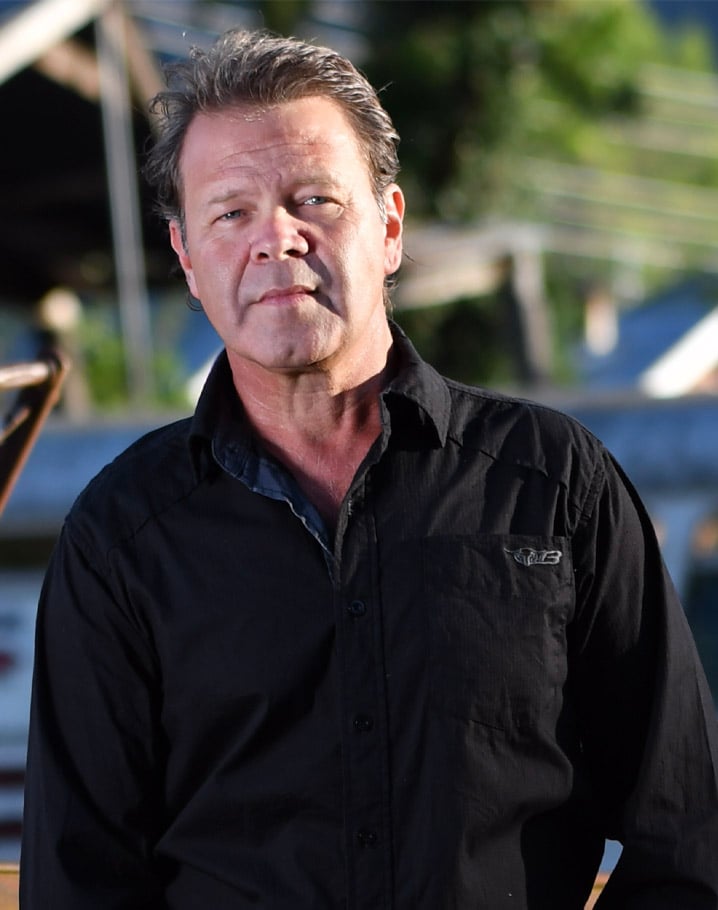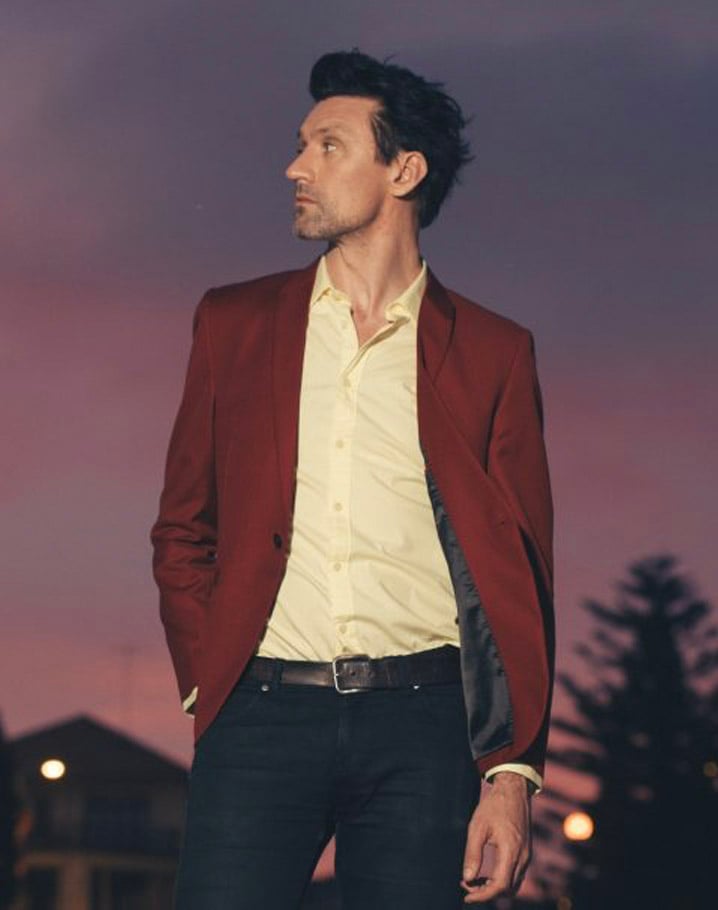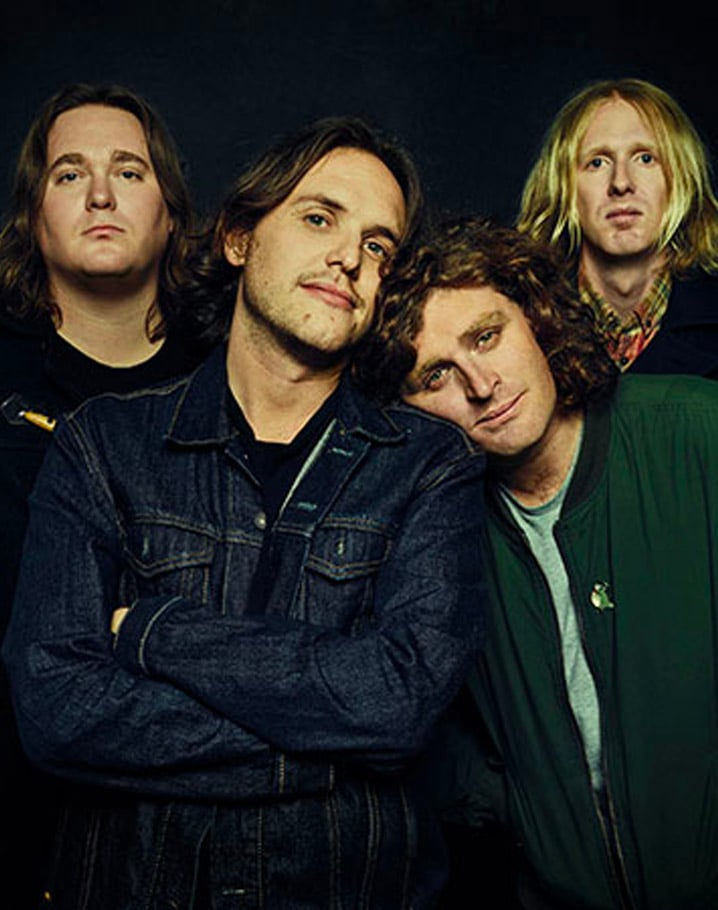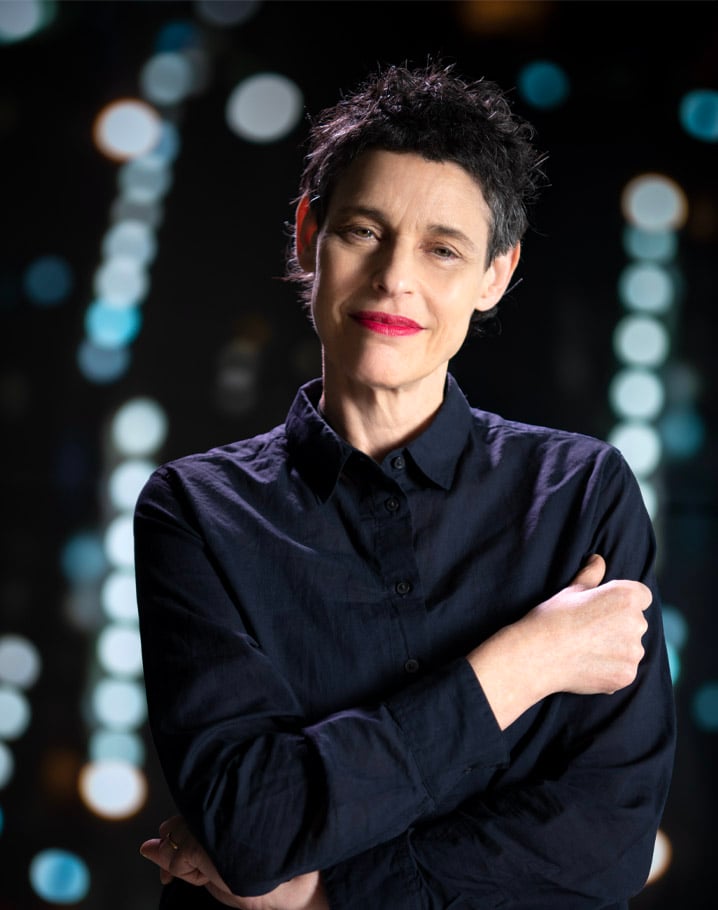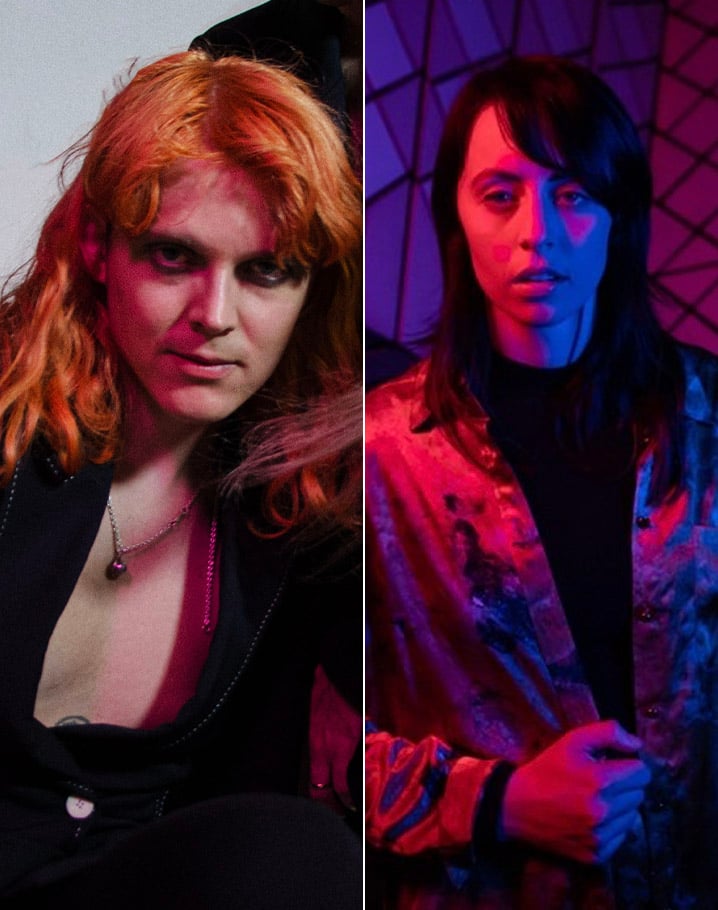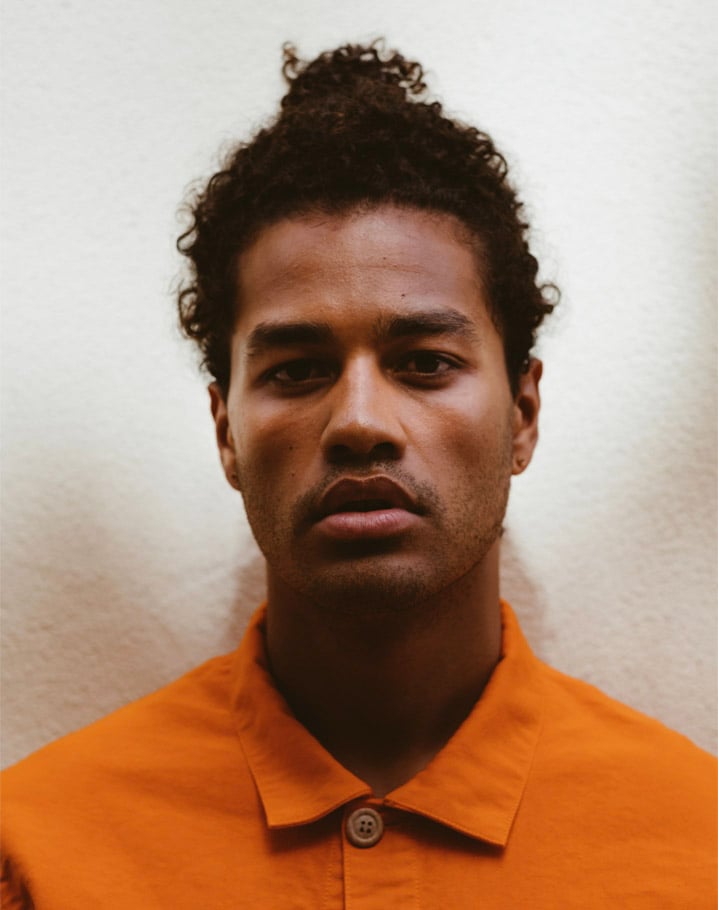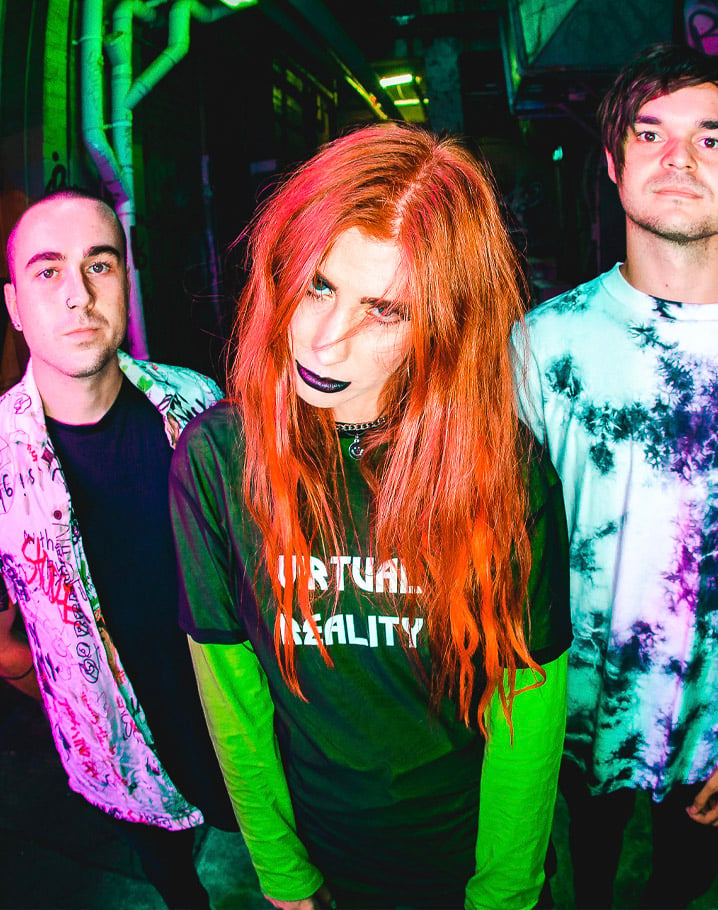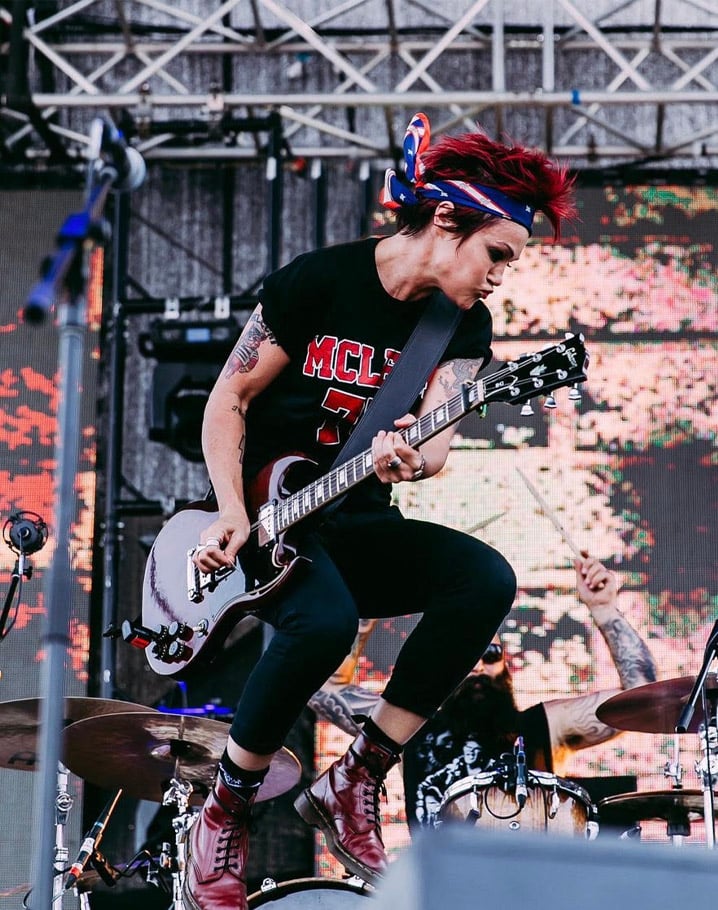Rolling Stone’s 50 Greatest Australian Artists of All Time
For as long as music has existed, so too have artists, and corresponding opinions about which of these artists is better. Any sort of discussion about music and varying degrees of greatness is guaranteed to become one of the most contentious topics imaginable, but often, these heated discussions about music tend to overlook the exceptional artists born and bred in our own backyard.
In a year when a global pandemic has emptied stages the world over, and musicians need support more than ever, we felt it was time to set our sights on the Australian names who have helped put local music on the map here and abroad. Thus, the idea for the 50 Greatest Australian Artists of All Time was born.
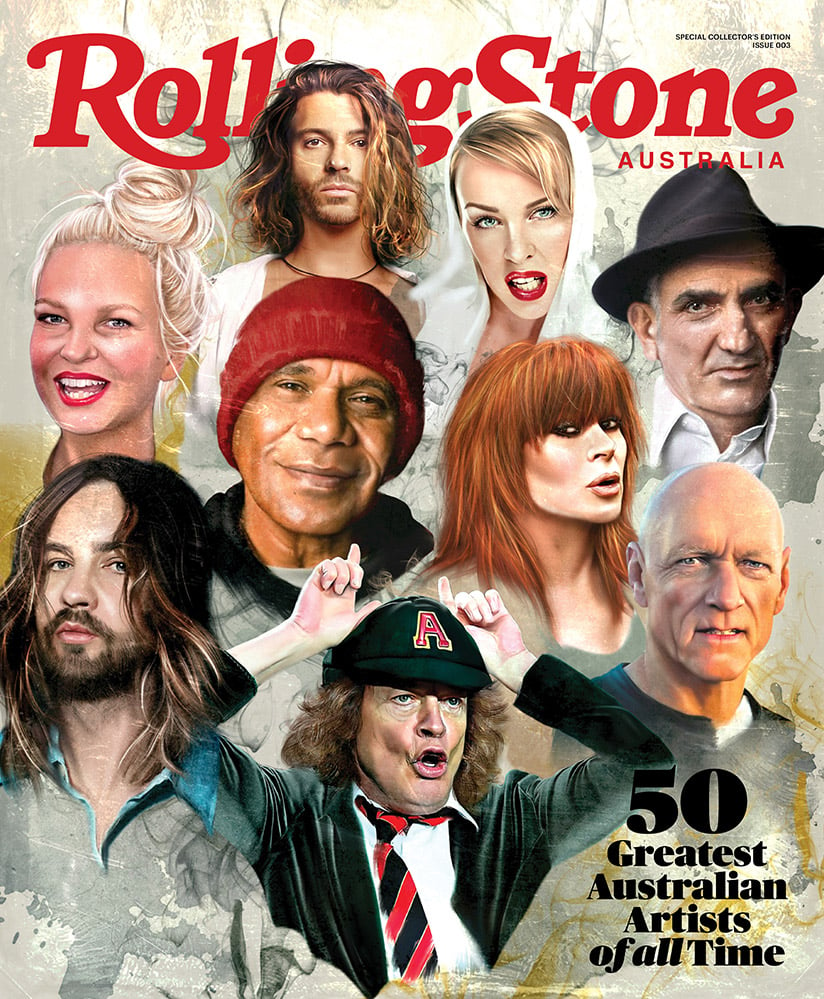
Cover illustration by Debb Oliver.
Originating as an idea for an online feature, our vision soon became more grandiose. Before long, we were receiving and tabulating suggested inclusions of hundreds of Australian artists, from critics, music industry figureheads, past Rolling Stone Editors and writers. This list has been laboured over by some of the most respected names in music.
Paired with testimonials from fellow artists, whether they be veterans or contemporaries, the result is a list which is bound to be one that generates countless hours of discussion and debate but one that also seeks to honour the immeasurable musical contributions from artists that call Australia home.
Their legacies may be long-lasting, or they may be names helping to bring newfound focus onto this great southern land, but at the heart of it all lies an inextricable link with the musical fabric of Australia.

Slim Dusty
Slim Dusty tells the Australian story. Not many artists have been able to be as authentically Australian as Slim. He was the first person to bridge the gap to poetry for me. He was able to almost recreate Banjo Paterson and Henry Lawson poems through song. His music spoke volumes of his love for Australian culture and that’s what sucked us all in. We felt like he was singing about us.
For me, Slim crossed all racial divides with music, he pulled a lot of people together. He had a huge following in the cities as much as he did in the Indigenous communities. That’s what glued everyone together and Slim was a big part of that glue.
The song that resonated with me the most when I first heard it was “Trumby”, which was written about an Aboriginal ringer who went out to do his work but because he couldn’t read or write he didn’t realise that one of the waterholes was poisoned for dingos - that’s how they used to get rid of dingos in the old days in the bush.
With Trumby not being able to read, he wasn’t able to read the sign that said, ‘Do not drink this water, it’s poisoned’. It made me very sad to think that someone’s literacy skills ended up taking their life but it also made me realise that maybe I should step things up at school. It was a big connection with me, not only with it being about an Indigenous man who died, but also the fact that it was a Slim song.
"Slim crossed all racial divides with music."
While Slim’s guitar style is my default - and a lot of people fall back on that default of picking and strumming - I think what will really resonate throughout a lot of the younger generations of artists is his storytelling. He and Joy (McKean) were able to put together stories that were completely relatable and they’ll go on to be relatable to the next generations. That storytelling for me comes from my Indigenous side, but it also came through the music of Slim Dusty.
As for Joy and her contribution to Slim’s work, there isn’t enough time in the world for me to talk about it. She was cutting edge. You can’t talk about Slim stepping outside the square with his writing with big songs like “Indian Pacific”, “The Biggest Disappointment” and “Walk a Country Mile”, without talking about Joy. They were Joy’s songs.
She was able to push him because she was his wife and she pushed him into territory he was not comfortable in. That’s what an incredible partner does for you, challenges you. They push you to the edge of the cliff and you have to work out whether you’re jumping or not, but when you do jump they’re the actual safety net that’s underneath you in case you come a gutser. I see those challenges in beautiful songs that came out of that marriage and I hold her in such high regard.
I’ve watched the movie, Slim And I, twice, and the first time I watched it was in Tamworth sitting next to Joy. We laughed and cried, and I felt so nervous sitting next to her because it was her story. I was actually in the film and all I wanted to do was make her proud of what I had to say about her. F
or me, hers is this beautiful country music love story that we use as a yardstick in our own relationships. Everyone that sees Slim and Joy sees them as the marriage you want to have.
My mum and dad broke up very early in my life and what I found in Slim’s music was home. Sometimes my home was a little bit disjointed at times but a lot of Slim’s songs, even when I was living in Sydney with my Dad, made me feel like I had somewhere to inhabit.
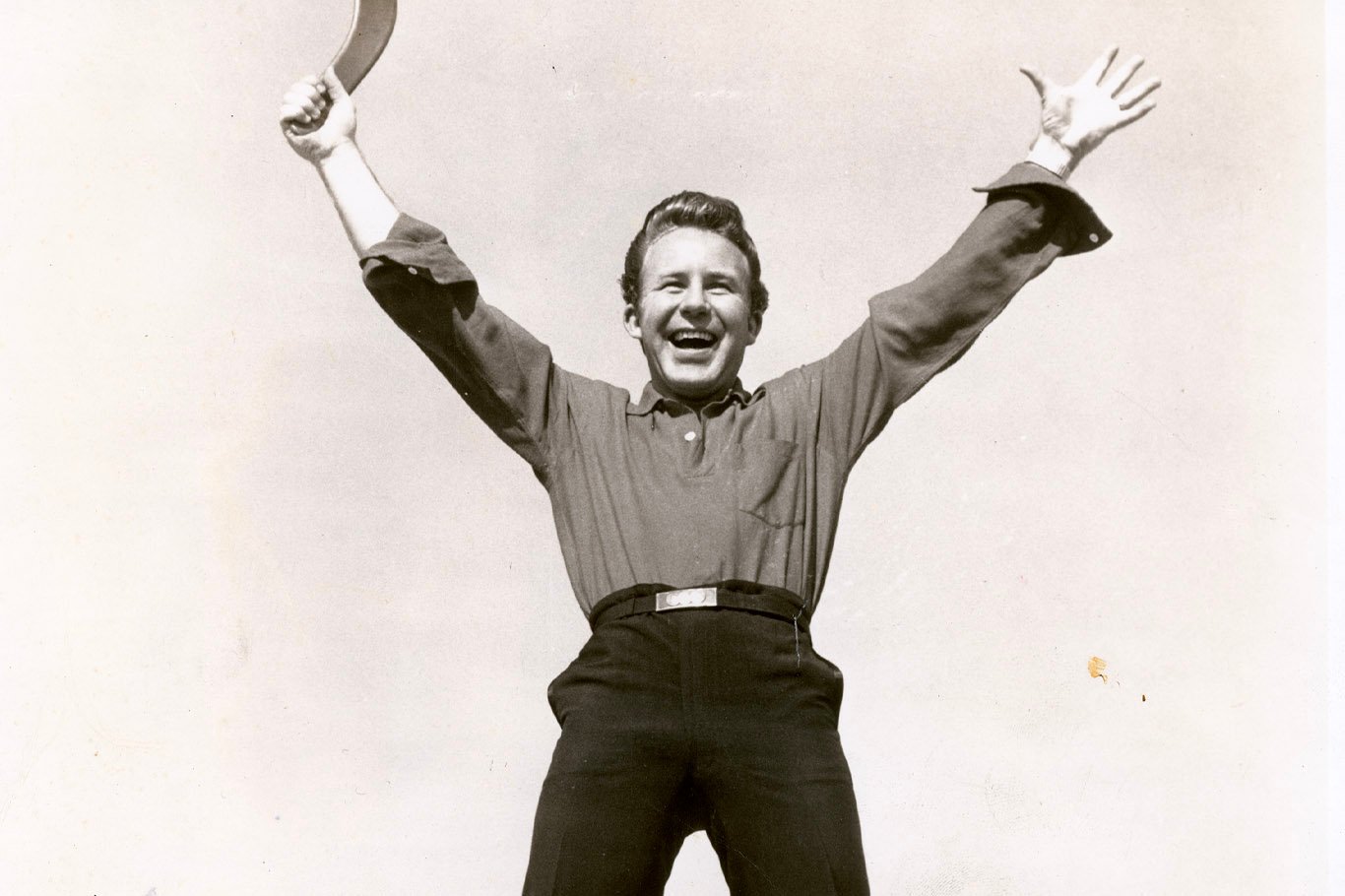
Johnny O’Keefe
Rock‘n’roll is the original disruptor of music. Four chords, simple melodies and a cracking backbeat that the kids could dance to. Each country needed someone who could lead the new rise of popular music with a voice and a vision. America had Elvis. We had J.O.K.
Johnny O’Keefe had the talent, the drive and the luck to be present at the birth of rock‘n’roll. It’s important to remember how conservative Australia was back in the Fifties and how “Americanised” the hit radio stations were. So, when Johnny started to growl through his first major hit, “The Wild One”, the kids had found their leader. The revolution had begun.
"America had Elvis. We had J.O.K."
The Bondi boy soon had more hits and was touring with Little Richard and Eddie Cochran, all the while showing these Yanks how we could take their new music and make it our own.
J.O.K. was also an entertainment industry pioneer. Adapting to the times he found and nurtured new talent. He went on to host multiple TV shows, which another rising star, Johnny Farnham would also do years later. All the while he kept releasing songs and continued having multiple number one singles.
Like most rock stories though, Johnny was not without his demons. A near-fatal car accident is cited as the beginning of a dark period for him. While The Wild One continued to work, he was battling alcohol and drug abuse. Johnny suffered a very public nervous breakdown, but managed to successfully return to public life. Then, there was a changing of the guard when four boys from Liverpool remade the whole world of music.
Johnny continued to work and tour. Australians adored him. He was the original. He was our star. We fell in love with him. We got married to his songs. We watched him on the telly. We saw him turn a hostile crowd of hippies at Sunbury into lifelong fans, which extended his legacy to his death in 1978 and beyond.
Without Johnny O’Keefe, it's safe to say our industry would look and sound very different. There would be no Billy Thorpe, Normie Rowe, or Jimmy Barnes. The opening credit sequence to the ABC show Rage would be pretty bloody average.
Johnny O’Keefe gave us a national musical identity. One that was a little bit louder now…

Yothu Yindi
Back in the day whilst travelling in the Top End, I met a young Indigenous trainee teacher on the northeast coast of Arnhem Land. It's a place of coastal mangroves and paperbark forests where the Yolngu people have lived for eons.
With an acoustic guitar at his side that person, now known as Dr M Yunupingu, told me he wanted to form a band that would take Yolngu culture far and wide. Not long after, Yothu Yindi (loose translation, “child and mother”) emerged.
Including the now-famous Gurumul Yunupingu on keyboards and guitar, Witiyana Marika dancing and playing traditional clapsticks, alongside white fellas Stu Kellaway and Cal Williams, Yothu Yindi were distinct and different, fusing modern pop/rock with traditional music and language, underpinned by a philosophy called 'both ways'.
'Both ways' envisioned black and white working together, respecting each other's cultures and forging a united, fairer nation. In time Yothu Yindi took this perspective across Australia and later the world – a singular achievement.
Their best-known song “Treaty”, released early in their career, is a good example.
Incensed by the broken promise of then Prime Minister Bob Hawke for a treaty between Australia and Aboriginal people, “Treaty” demanded a document of reckoning to expunge the stain on Australia's conscience due to the theft of First Nations' land by British colonists. Paul Kelly and l helped in the writing, Mark Moffat produced – a 'both ways' moment.
"We used to hang side stage watching the band in full flight."
The first version went nowhere. But a dance remix by Filthy Lucre saw it became a radio hit as listeners across the country heard - many for the first time - the Aboriginal language Gumatj, in a song directly addressing one of the most crucial issues of our time. Regrettably one still not resolved.
During the Nineties, Midnight Oil toured with Yothu Yindi in the US where nobody had ever seen anything quite like them.
We used to hang side stage watching the band in full flight, with dancers and backing singers painted in traditional markings exhorting the crowd to rise up and listen. The didge throbbing like the heartbeat of the continent, the music rolling off the stage like the tide, carrying the words to places unknown.
They made six albums, with Tribal Voice my favourite, and played all over including at the closing of the Sydney 2000 Olympics. Since the tragic early death of Dr M Yunupingu in 2013, they have ploughed on as Yothu Yindi and The Treaty Project. Yirrmal Marika, Dr Y's grandson, joined us at the Domain in Sydney for a version of “Treaty” to close off The Great Circle tour in 2018. Thirty years later still performing, still getting the message out – some band.
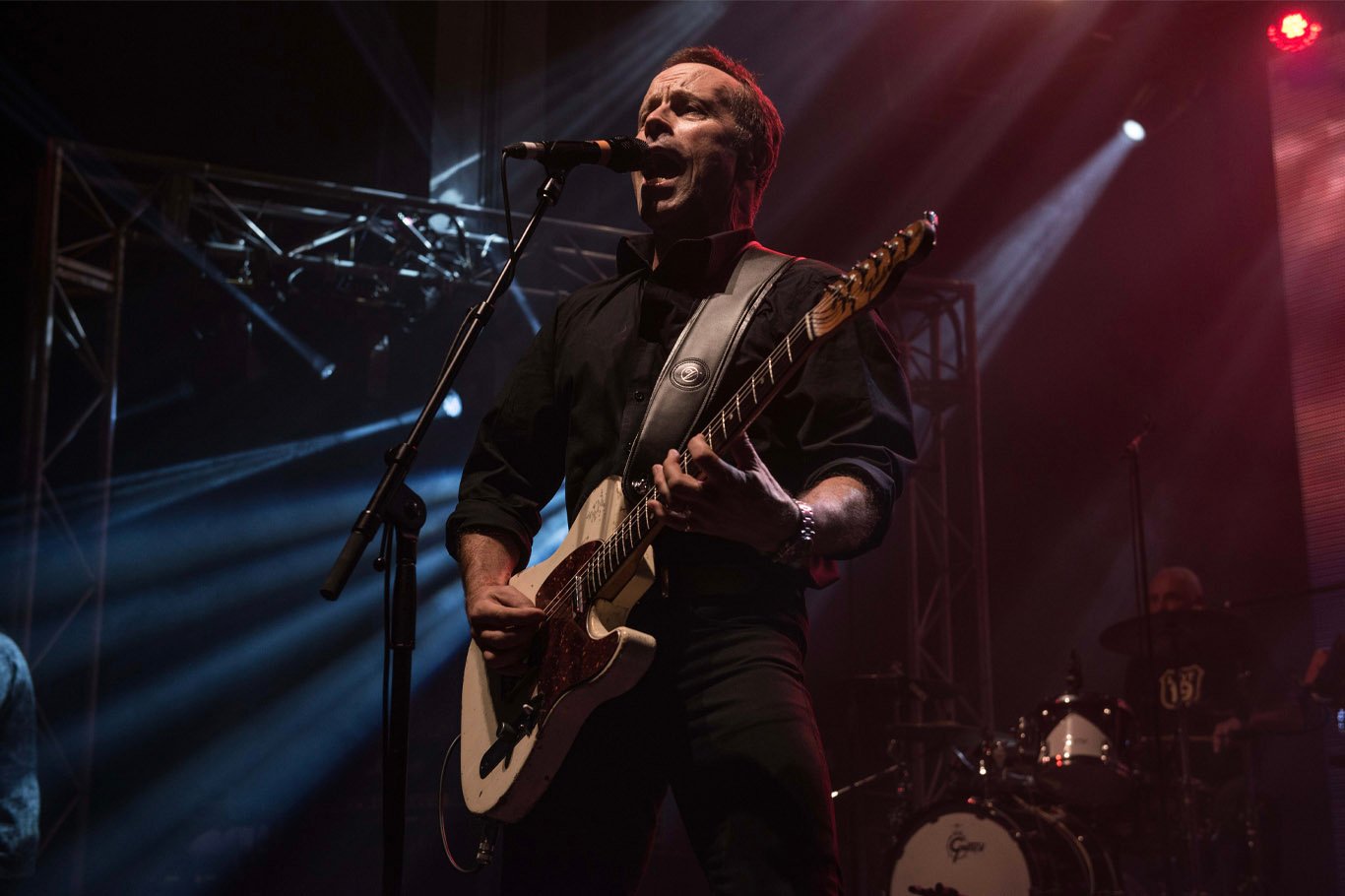
Hunters And Collectors
I have my three older sisters to thank for introducing me to Hunters and Collectors. They were out every weekend in the Eighties going to see live music in Melbourne, while I was at home sitting on the end of my bed trying to strum along on my guitar as the American Top 40 Countdown beamed out of my little clock radio.
But I’ll never forget the first time I heard this sound come blasting through my bedroom wall. It was from a precariously-placed boombox in the bathroom on the other side, where my elder siblings were getting ready for another night out. It was a pounding, intense rhythm accompanied by a wonderfully jarring and menacing bassline.
I put my guitar down and wandered down the hallway to the bathroom where I found the door swung open wide, and my sisters in there dancing and jostling in front of the mirror in various stages of makeup application and hair-tousling. I arrived just in time to hear the music come to a grinding halt and then all four of them (Gill, Louise, Moira, and Mark Seymour) screaming out, “YOU DON’T MAKE ME FEEL LIKE I’M A WOMAN ANYMOOOOOORE”.
Everything changed for me then. This was quite different to anything I’d heard coming out of my little clock radio, and I began further investigations immediately.
What I discovered was music that was expressive, raw, honest, emotive and more real than anything I had heard before. There was such an intensity to the track “Say Goodbye”.
The band sounded like they were attacking their instruments on an industrial factory floor and there was an urgency and a desperation in Mark Seymour’s vocal delivery that I’d simply never heard before. It sounded like he was absolutely at his wits’ end and had more than a few things to get off his chest.
"Everything changed for me then."
This didn’t sound like music for escapism, this sounded like people playing music because there is no escape. And I just didn’t know you could do that. (I also didn’t know that a trombone, a trumpet and french horn could rock so hard).
So I have Hunters and Collectors to thank for showing me that music can be cathartic. And also cleansing. Pretty much the bookends of songwriting. Thanks guys.
There just isn’t the space here to talk about the sheer quality and diversity of the songwriting, the scope of subject matter, the spectrum of musical styles, and the energy and conviction that they bring to the stage with them at every single show.
So I’ll just finish by saying that they remain a huge inspiration to me, their contribution to Australian music is simply immense. May their songs be shouted to the blue summer sky for generations to come.
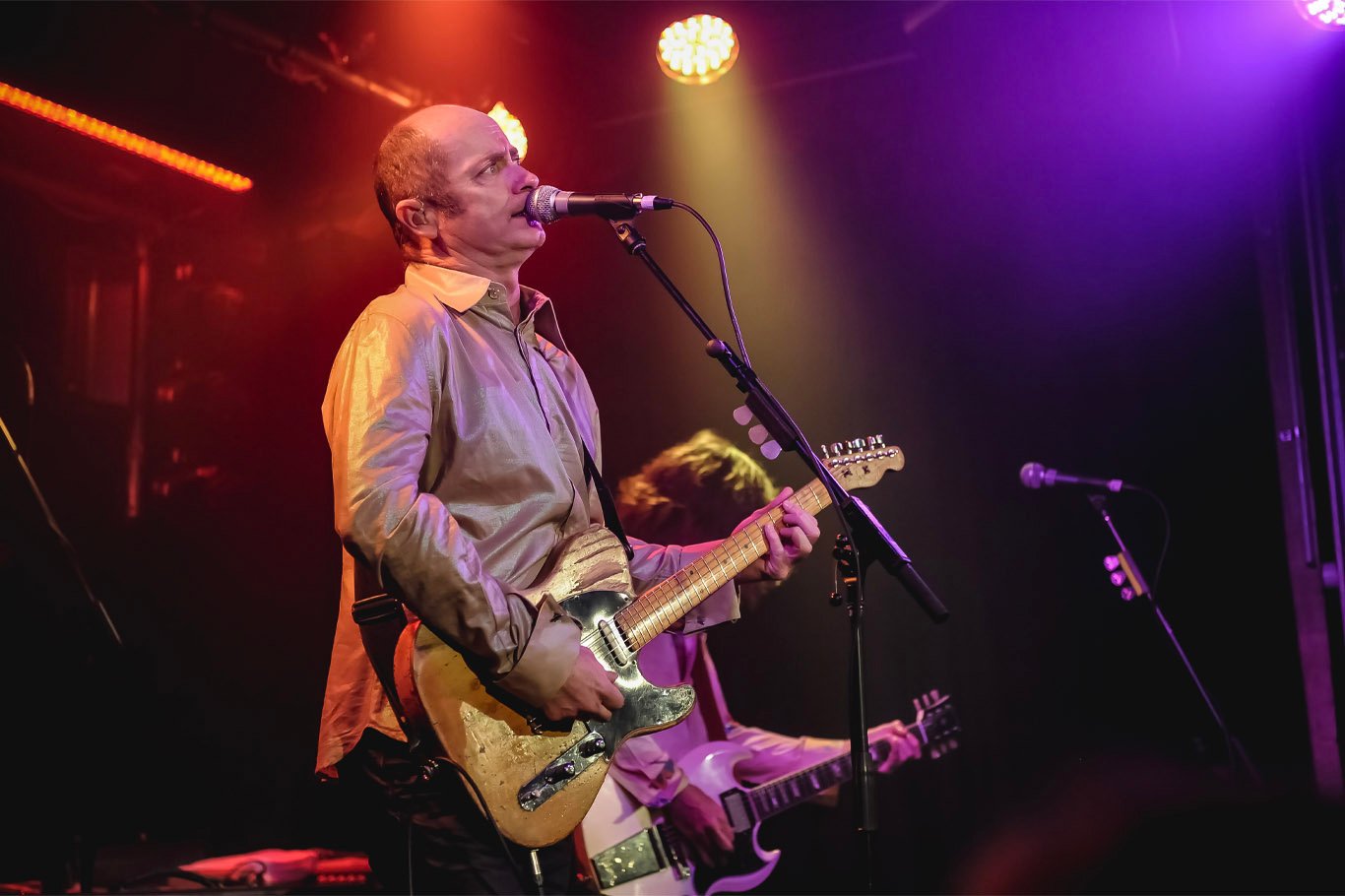
Hoodoo Gurus
My formative memory of the Hoodoo Gurus occurred about a decade ago. British India was just starting to get some traction and we were playing a festival in rural NSW. We opened and the Gurus closed. After melting some faces with a string of familiar openers, Dave Faulkner announced that they were going to play a song they “hadn’t played in a while” and launched into “Turkey Dinner”, the b-side from “Death Defying”. A few bars in, the band looked at each other puzzled, the song floundered to a stop and Dave spoke to the band through the mic: “Hang on, I think it was slower than that, kind of sexier.” They tried again and nailed it.
There was no malice in the directive, the band all knew something was up, and if they were going to play it, they were going to play it right. Not for the sake of the audience, for the sake of the song.
It floors me that, four decades in, the band were still dynamic enough to dip into the obscure corners of their back catalogue if the mood should take them. This wasn’t a nostalgia act; the band weren’t on stage for any other reason than they loved the music. You could see it on their faces, and you could hear it in the songs.
And what songs! Take the first two cuts from the debut (which sounds like a greatest hits package when you play it today). “Let’s All Turn On” is a mission statement, a pop-art spasm of rock‘n’roll clichés falling over each other in excitement. It sounds like walking in on the greatest house party of all time.
But this gives way to “I Want You Back”, and we’re in totally different territory. It’s catchy as hell, sure, but the melody is jerky and yearning. It’s a breakup song, but the lyrics only tell us half the story, the details artfully selected. Faulkner’s vocal is a masterclass in restraint and release, the drama when he jumps the octave in the bridge is operatic. It’s world-class songwriting, on par with the best of The Cure or R.E.M..
"It sounds like walking in on the greatest house party of all time."
The first record set the scene, but they didn’t let up. Exploring their back catalogue, the quality is almost overwhelming. Of course, it doesn’t hurt that their wealth of singles deservedly clogged the airways when I was young. They’re the ultimate, “hang on, this is them as well?” band.
As their songs suggest, the Gurus weren’t part of a scene. Dorkier than INXS and janglier than pub rock, a bit paisley underground but with actual radio hits. The sheer joy of guitar pop permeates everything they touch. They remind us that rock‘n’roll should never be played without relish, but that doesn’t mean it has to be stupid. Life isn’t tragic, it’s bittersweet.
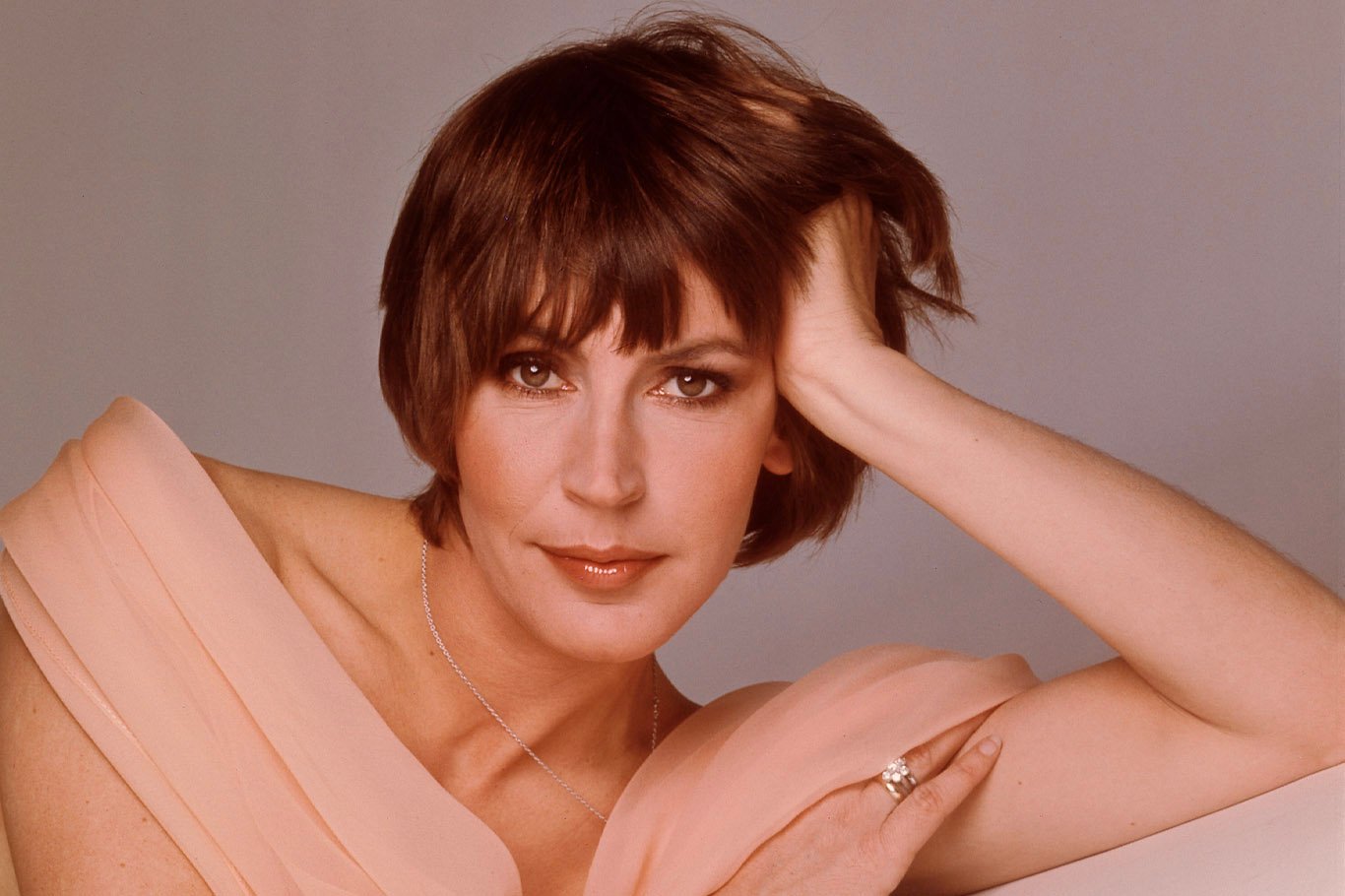
Helen Reddy
I was 13 years old in 1972 when “I Am Woman” was released. Helen Reddy won a Grammy for her performance and instantly became Australia’s most famous and successful female artist with a string of chart-topping, number one hits following.
The song had appeared on an album the year before and was picked up to be used over the opening credits of a tepidly reviewed Women’s Liberation feature film. Still the record company was encouraged to release the song as a single in May 1972. It was heard like a roar around the world, nothing short of an anthem for the growing second wave feminist movement.
By December “I Am Woman” had hit number one on the Billboard charts. The National Organisation of Women (NOW) blasted “I Am Woman” out of their loudspeakers at their 1973 Gala, bringing a thousand women to their feet holding hands, singing and dancing in a circle around the ballroom.
"It was heard like a roar around the world."
At close to 50 years old, “I Am Woman” still remains a singular rallying cry for the Equal Rights Movement. It’s quite an achievement. I was invited to participate on the song for Judith Lucy’s 2015 TV show along with some of Australia’s most stellar female singers; it was an electric atmosphere in the studio, the sisterhood palpable in goosebumps and high fives, all of us acknowledging Helen Reddy as a pioneer and pathbreaker in our chosen field.
Sometimes the power of a song is evidenced by negative reactions. In 2018, I was asked to perform at the Closing Ceremony of the Commonwealth Games. It was initially proposed that I should perform Kasey Chambers song “Not Pretty Enough”. It’s a lovely piece, but instinctively I felt that “I Am Woman” would be a more suitable selection. Uplifting, anthemic, Australian, and a profound celebration of the Commonwealth Games Federation’s announcement that this would be the most gender equal major multi-sports event in history!
Unquestionably this was something truly wonderful to highlight for male and female athletes and sports fans. However the ultimate decision makers were unimpressed with my suggestion, fearing that it would be a divisive exclusionary choice. At the height of the #MeToo movement, extraordinarily, Helen Reddy’s 1972 hit “I Am Woman” was deemed too controversial to be part of the 2018 Closing Ceremony of the Commonwealth Games. Now that’s iconic!
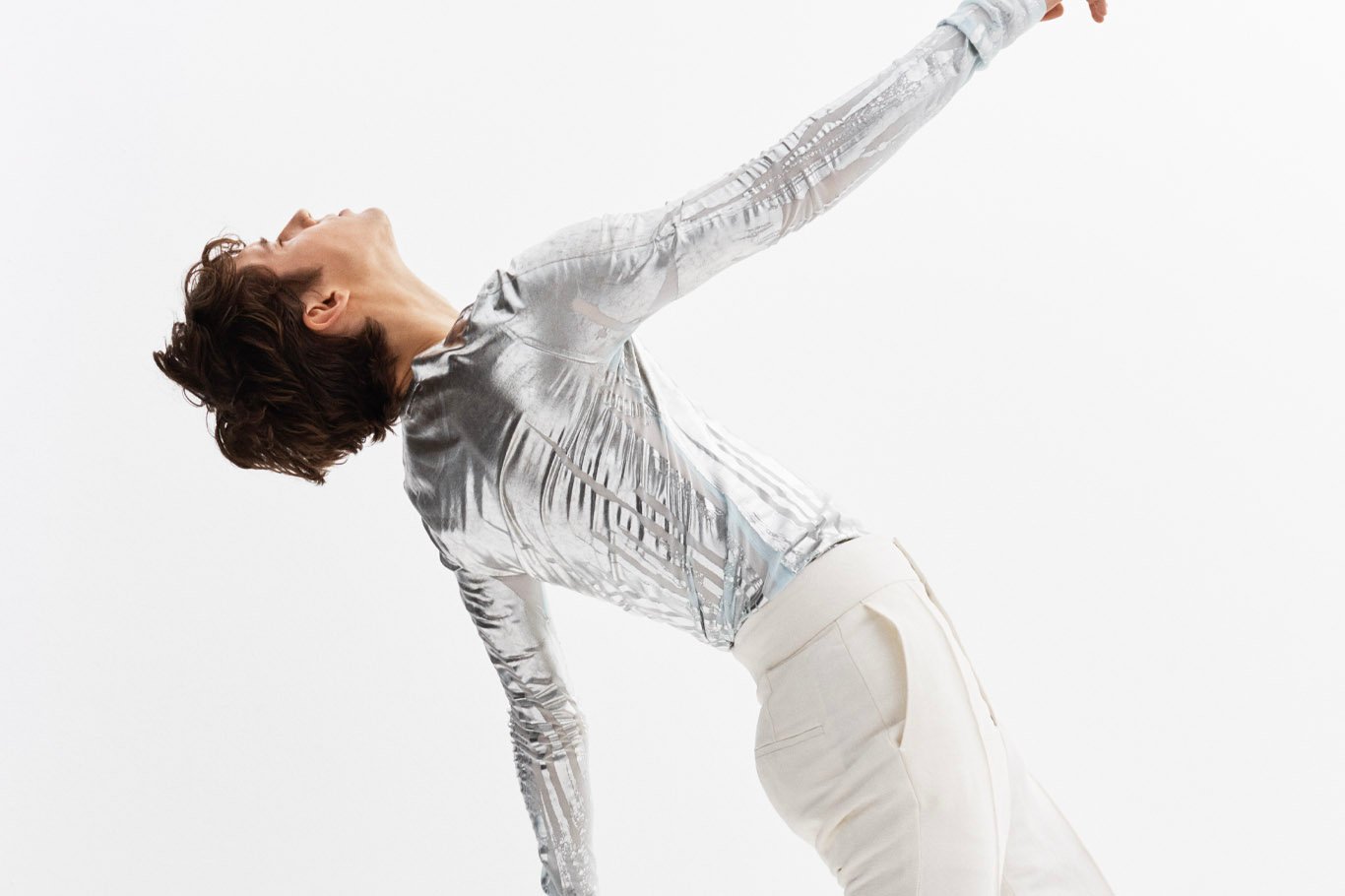
Troye Sivan
In 2014 I was still years away from coming out, and I remember seeing Troye owning who he is and finding freedom. I really admired that, because at that point I felt like I would never be able to do the same thing myself. When “My My My!” came out – the first Troye song I was truly obsessed with – it felt like a real moment for a queer artist crossing over into the mainstream, where it wasn't just queer people that were celebrating it. It was so undeniable.
Artists like Troye break down walls for queer artists to follow in their footsteps, but he also has this level of artistry. Troye takes risks, he pushes boundaries. He's in a position where it would be easy to make safe, accessible pop music and follow a line, but he did the opposite of that with the incredible In a Dream EP. That’s something I really strive to do with Cub Sport.
"Troye is undoubtedly one of the great pop stars of our generation."
To watch Troye Sivan flourish so fearlessly on a global scale, and continuously evolve his sound with each release fills me with pride. Troye represents a progressive positioning for queer artists. People don’t talk about Troye because he's gay, they don't talk about him being gay, they talk about the beautiful music that he makes and how talented he is. That is, hopefully, where we're heading. Where the representation is a given, and it isn't something that needs to be pointed out. It can just be celebrated because the art is amazing.
Troye is undoubtedly one of the great pop stars of our generation, but for me he was also part of the reason I decided that I needed to embrace who I am, to really be proud of the person and artist that I am.
- Tim Nelson
Vulnerability and candidness are Troye Sivan’s greatest assets. With them, he has manoeuvred through youth and surfaced an unflinching popstar, emblazoned with all the integrity he has tirelessly built his career on.
Blue Neighbourhood, Sivan’s debut record released in 2015, cemented him as a truly authentic artist. The heart-wrenching complexity of a young queer relationship and its intersection with family is mapped impenitently in songs like “Talk Me Down”. To watch the accompanying video almost feels like an invasion of privacy, though for any individual that has felt a similar pain, it feels like the safest place on earth.
In 2018 came his second studio album, Bloom, and with it a new era of Troye Sivan was born. The complete obliteration of stereotypes and abundant self-acceptance woven through the record leaves behind the notion that living is just about survival. And while “My My My!” can be counted among the greatest stadium-worthy pop songs of all time, it is the substance of Sivan’s stories that linger.
"Vulnerability and candidness are Troye Sivan’s greatest assets."
In 2020, his evolution continued with the release of the In a Dream EP; a unique and cathartic display of songwriting that seems his most intimate yet. In Sivan’s arsenal is his ability to take the personal and make it shared.
Like many, I came to know Troye via the internet. He tweeted about a song I had written. My Twitter account, which normally has an almost undetectable level of traffic, was blown up by his adoring fans, causing the application to freeze and shut down on my phone. When we finally met in person a year later, we wrote a song together and called it “Postcard”.
“And my hopes, they are high” for a time when a “coming out” video seems quaint and irrelevant. But when Troye Sivan boldly made the declaration to the world via the internet in 2013 – it was a lifeline. Emerging onto the world stage as a YouTuber teen, the weight of Troye Sivan’s words captured an audience waiting to be seen. He has since become the fierce, unapologetic voice of a generation.
These days you are more likely to find Sivan on a stage somewhere around the world with Taylor Swift or Ariana Grande, rather than appearing on his YouTube channel from his childhood bedroom. And yet, still with him are all those he has made feel seen. Only now there are millions more and he is an international superstar. His visibility is a parachute.
- Gordi
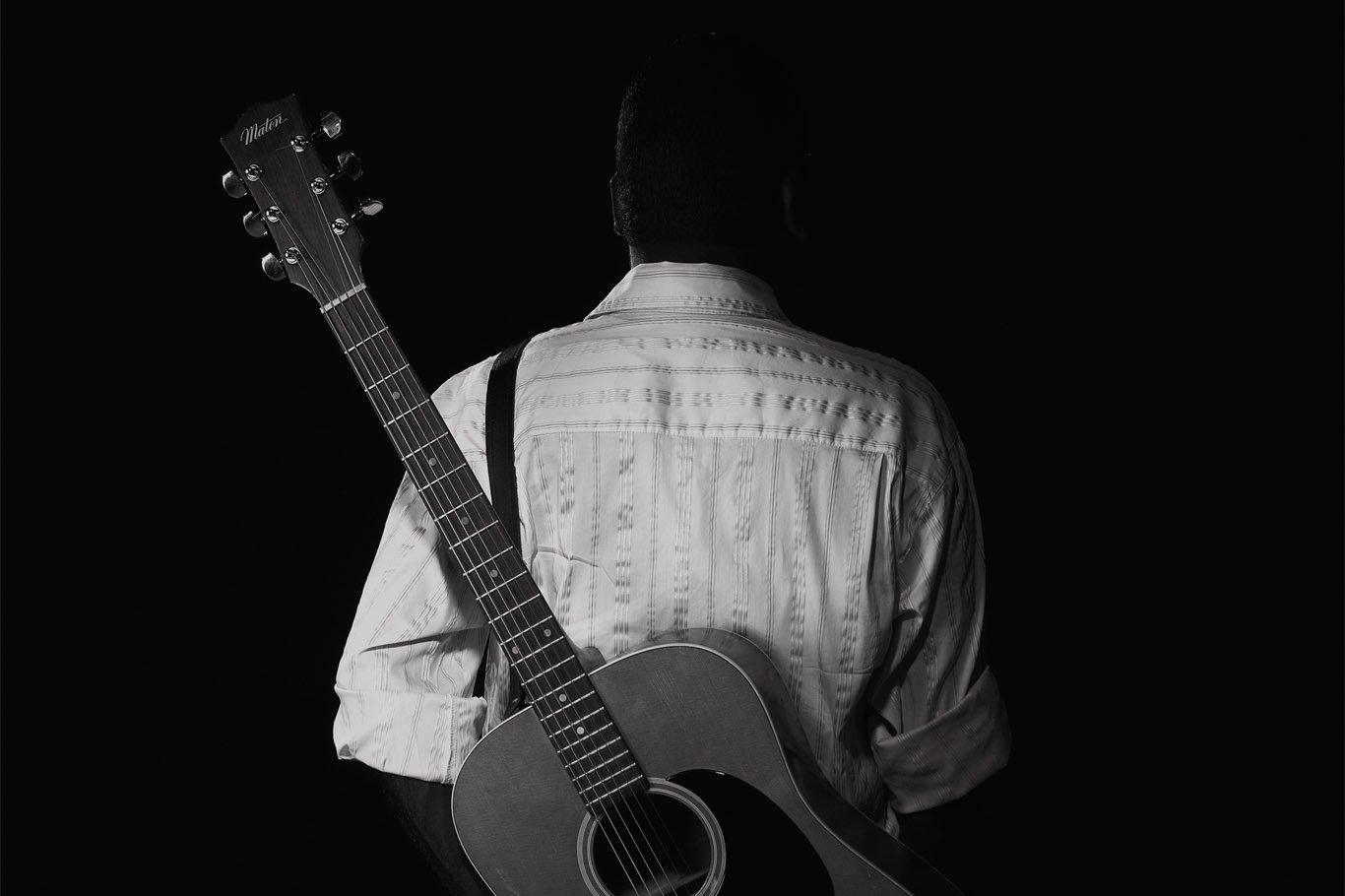
Dr G Yunupingu
My name is Ziggy Ramo Burrmuruk Fatnowna. I am a Wik man, however we grew up in Gapuwiyak. My parents were adopted into the Yonlgu kinship system, so my siblings and I were born into it. Burrmuruk is my Yolngu name given to me by my Momu (grandmother). When someone dies in Yolngu culture you do not say their name. Since this artist has passed away I won’t refer to his name while I write this.
Where do you even begin? How is it possible to capture the importance of his art? Music flowed through him, it is undeniable. Personally when I listen to his music I feel at home. I am reminded of my childhood, reminded of family and what it feels to be in Yolngu country. His music is a gift. The fact that this sacred language and culture is shared with those who tried to destroy it is not lost on me.
I feel that I am not able to capture the importance of his music in written words. We come from an oral culture. I think we all feel that when we listen to his music. His voice speaks to 60,000 years of knowledge, culture, tradition, love, strength, pain and so much more. He is truly a transcendent artist. I remember reading that he only created music when he was inspired. Every song in its truest sense is an authentic expression. It is authentic, not just because of the languages it is in but because it is him completely. You feel his soul in every note, in every chord, in every second of his art.
"His voice speaks to 60,000 years of knowledge, culture, tradition, love, strength, pain and so much more."
He makes me proud, his music is truly profound. However, I experience a deep sadness when I listen to his music. Australian Indigenous culture is not homogenous. There were over 500 languages spoken here. His ability to sing and create art in his own languages should not be rare, but unfortunately it is. Indigenous language, culture and knowledge is not valued in this country. His music demonstrates how wrong that is.
Regardless of your ability to understand Yolngu Matha, you can feel his spirit. He is a rare artist but growing up in Yolngu country I heard amazing voices and songs throughout ceremonies. Not only Yonlgu people, but all Indigenous Australians are some of the most talented people in the world. We just need to be given a chance.
His music inspires me. It makes me proud to be Indigenous. His voice had an ability to cut through everything. I don’t think I have processed the fact he is no longer with us. I will forever be grateful for the music he has left behind. Music is a universal language but no one has ever spoken it like him. I am not sure if anyone ever will. I think his art is a portal to what Australia could be. A country proud of all of our history. He will be an important artist now and forever.
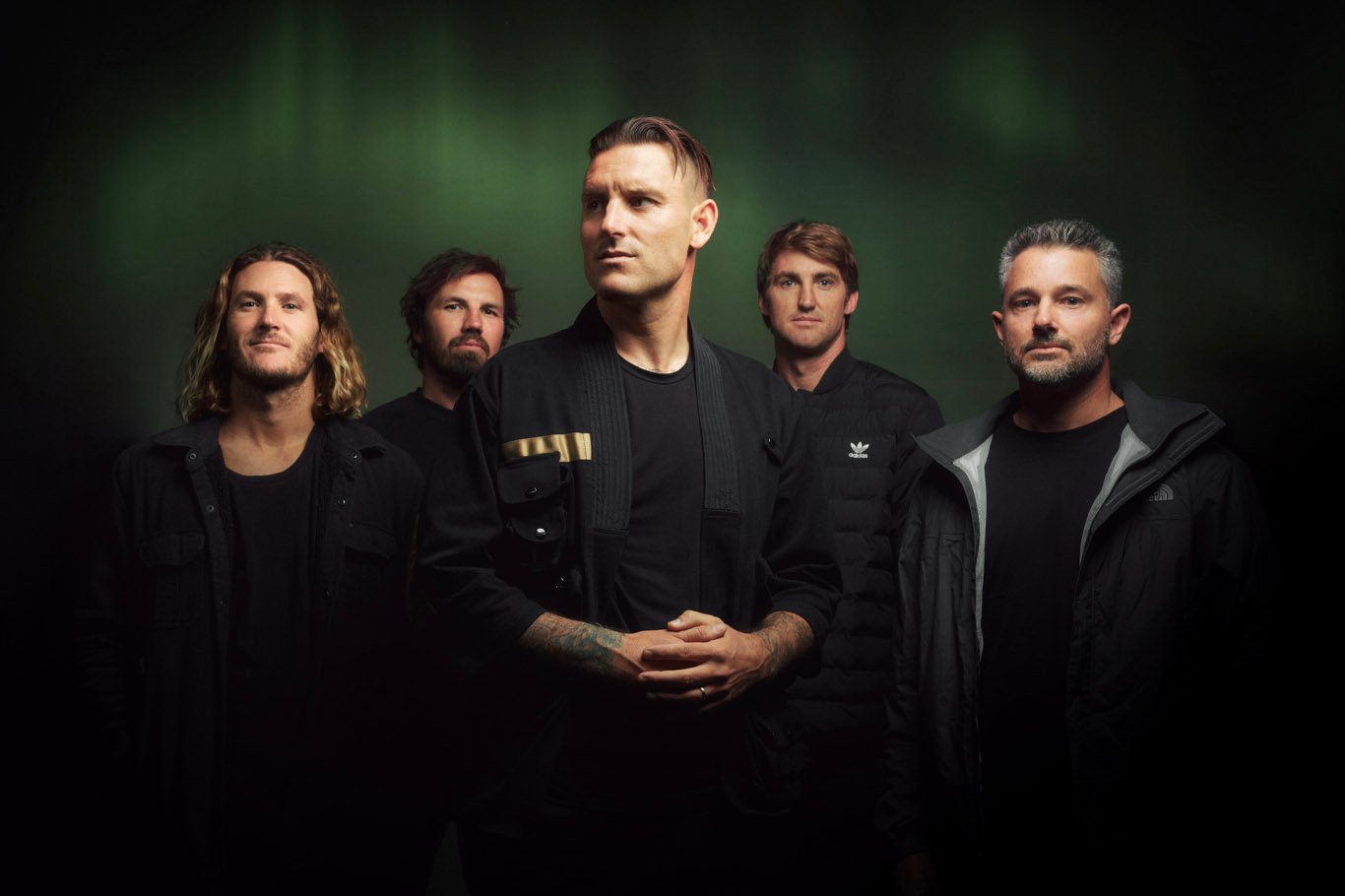
Parkway Drive
From tearing up the Byron Bay Youth Centre to headlining some of the biggest metal festivals on the planet earth, Parkway Drive are a homegrown heavy metal Cinderella story. That is, if Cinderella was five sweaty, inked-up surfer dudes from the NSW North Coast playing blastbeats and neck-snapping guitar riffs in drop B tuning.
For the scores of aspiring musos who make up Australia’s heavy community, witnessing their ascension over the past 15 years has been fucking inspirational. This was a band who weren’t from a big city; who were self-managed; who weren’t afraid to sleep underneath vans or on tarps in freezing temps for the love of being on tour; and who delivered each and every show with the same gut-busting intensity, regardless of whether they were performing in front of ten people (yep, even Parkway had those gigs) or ten thousand.
Nowadays, that number soars as high as 75,000 – that’s how many fans witnessed the Aussie metalcore lords headline Germany’s Wacken Festival in 2019. And though the girth of their stages, the audacity of their production and the heat of their pyrotechnics may have increased exponentially with every album they’ve dropped since 2005’s skull crushing masterwork Killing With a Smile, the Parkway dudes’ DIY ethos, ride-or-die attitude and bulletproof mateship – which extends beyond merely the band members to include their whole team and crew as well – has remained more steadfast than Nimbin’s population of stoner hippies.
"They’ve consistently defied expectations, taken risks and fearlessly pissed people off with their music."
Parkway Drive may have become rock stars, but they haven’t become assholes; the band’s enduring down-to-earth personas and larrikin charm only galvanise their status as scene heroes. People worth looking up to, for both their musical achievements and moral fibre. I’ve had the pleasure of meeting frontman Winston McCall a few times now, and while he’s a truly magnetic and borderline-terrifying force of nature to behold onstage, off it he’s such a champ you’d have zero qualms introducing him to your nan (sorry if I’ve put your metal cred in jeopardy there, bud).
Another thing you have to salute Parkway for is the way they’ve consistently defied expectations, taken risks and fearlessly pissed people off with their music. Take their 2015 album Ire, which copped the wrath of handfuls of “core snobs” for its more “mainstream” metal sound, while simultaneously sparking a 3,600 signature-strong petition to make lead single “Vice Grip” Australia’s new national anthem.
Flash-forward five years, the band are now headlining arenas, and on track to be one of Australia’s biggest rock exports since AC/DC. And if you dare doubt Parkway Drive’s iconic status, just ask Byron Shire Council, who were forced to spray-paint the name of the road the band named themselves after on the goddam bitumen after losing an epic 12-year battle with fans who refused to stop stealing the street sign every time the local government replaced it (which, we’re told, happened on average about six times a year).
Parkway Drive are the ragtag home team that went on to win the world championship on their own terms, with their loyal fans cheering them on each step of the way. Viva The Underdogs.
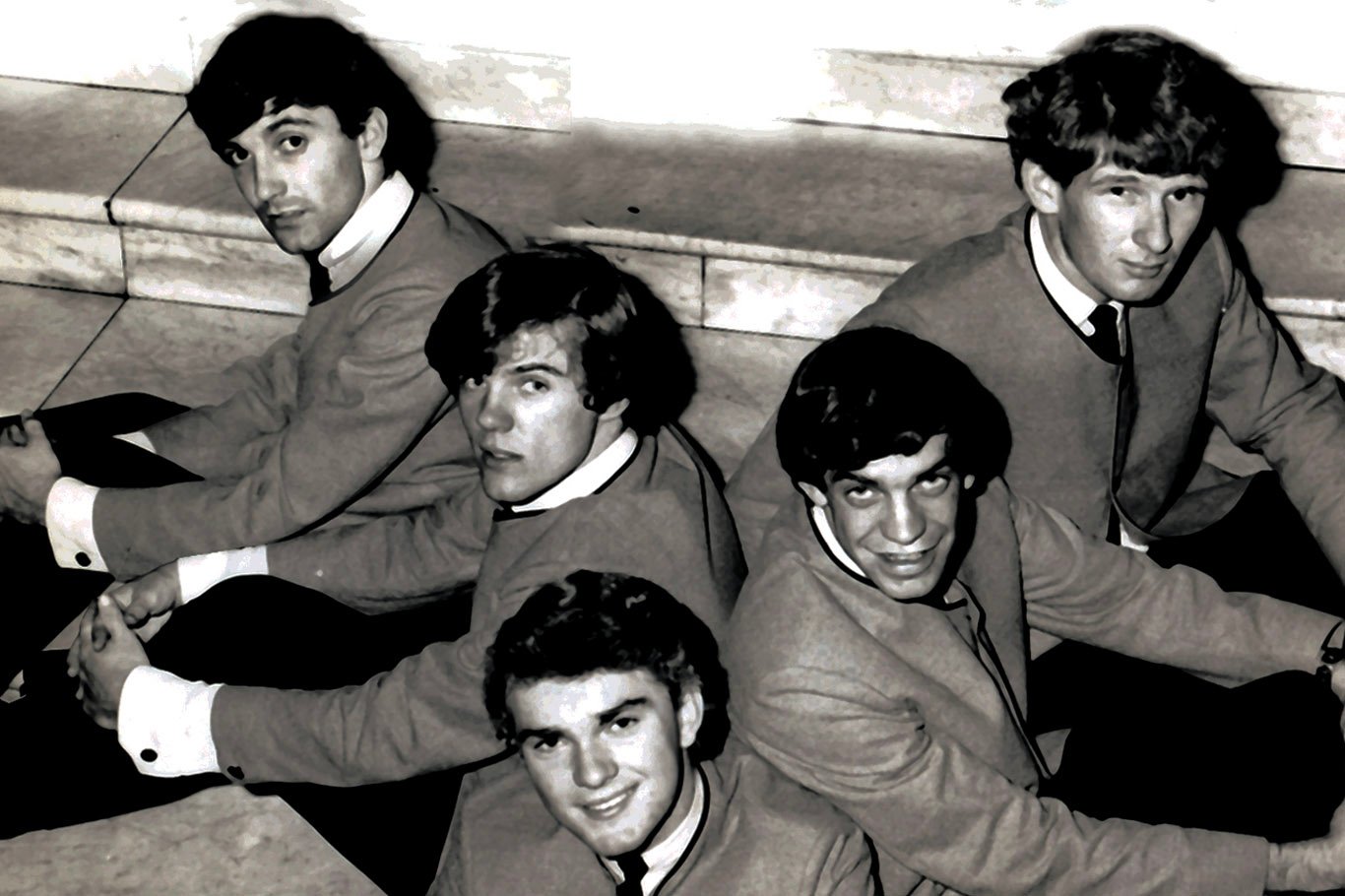
Billy Thorpe
Anyone who’s ever met Billy Thorpe would know his energy was a religious experience. This man was dynamite. A one-of-a-kind firecracker filled with charm and electricity. One look into those twinkly eyes and a flash of that cheeky smile and you were hooked line and sinker. Billy had “it”. In fact, Billy had “it” in spades.
I first met Billy at a benefit gig for his dear friend and fellow rock'n'roller Lobby Loyde from Lobby Loyde And The Coloured Balls. I had been asked to perform at the event, which had been organised by Billy himself.
I was already a fan having watched his now legendary performance with The Aztecs headlining the Sunbury Music Festival. This man knew how to command a crowd without making it look like he was trying to command a crowd. He was just being himself and having fun. I think that’s one thing that really set him apart and made him so magnetic, he was always having buckets of fun. People wanted a part of that, they wanted to feel what he was feeling, he was so damn infectious. Every time he walked on stage he totally came alive, channelled by the rock'n'roll gods that enveloped him so naturally. His guitar playing was soulful yet dangerous with an air of unpredictability. He didn't give a shit about the rules, all he cared about was having fun and playing rock'n'roll.
And boy was he good.
When he opened his mouth to belt out “Mama”, you could hear the gates of hell opening and the most powerful, passionate thunderous tone explode from his soul.
He had the greatest rock'n'roll voice of all time.
I discovered Billy through my love for his predecessor Johnny O’Keefe. Johnny was a badass and Billy was inspired to follow in his footsteps. I loved how you could watch Billy grow into himself through the years. From the 1964 black and white footage where he and his band were dressed in stovepipe suits standing on different levelled podiums (as they did a lot in the day) singing “Poison Ivy”.
He was very young with a clean-cut short hairdo - like Normie Rowe and all his other peers fashioned - but he was not like the other guys. He had that voice. That thick timber, even way back then. Fast forward to Sunbury 1972 and that clean-cut sheepish youngster had been superseded by the perfect long-haired rock'n'roll superstar that would eat his younger self for breakfast. This man was the shit.
"He had the greatest rock'n'roll voice of all time."
Meeting him at soundcheck at The Palais Theatre in Melbourne was a day I will never forget. I nervously walked into the room when Billy strutted over to me with a smile to melt a thousand hearts. “Hey kid, I’m Billy” .... yes. Yes you are...
I was called to the stage to soundcheck the song I was to perform with Rose Tattoo, “Nice Boys”. The beat kicked in and there I was holding the mic on stage with Rose Tattoo, Billy Thorpe standing front and centre in the auditorium just smiling at me. I was nervous but desperate to impress so I gave it everything I had from the pit of my gut. The song ended. Angry Anderson screams “yeah baby” and Billy claps and walks closer to the stage as I put the mic back on its stand. “You can really sing kid!” These words emanating from a man I had admired for so long filled me with joy and affirmation.
I followed him around all day like a puppy.
After that performance we continued to do more shows together. I learnt so much from him. He and his best mate Normie E The Bad Roadie looked after me like I was family. Normie would collect the leftover hospitality rider from their shows and bring it to my place to fill my fridge with beers.
When Billy noticed that I had strayed into dance music he sent Normie over to my house with a message: “Get the kid back into rock'n'roll”. The message was accompanied by a gift of a beautiful Fifties mint green Tokai Stratocaster guitar with gold hardware.
What a legend. His kindness and inspiration changed my life and I am forever grateful to have called him a friend.































